A coach’s gameplay and tactics rely on the set of players he works with. It is common to see these tactics get sacrificed to fit in an indispensable player. On the other hand, we have loads of examples of players getting dropped for not fitting into a coach’s system. It is difficult but important to find a key balance between the two.
It is relatively easier for a coach to adjust his ideas than have players transform multiple aspects of their game. However, a rare bunch of players who manage to do so are extremely adaptive and versatile. They don’t just fill the gaps in the team but often manage to redefine positional roles.
India has one such gem in FC Goa’s midfielder Brandon Fernandes. In this tactical analysis, we will look at Brandon’s role at FC Goa in the 19/20 season of ISL. The analysis presented in this scout report will highlight the features that make him one of the most unique midfielders in India.
Positioning and Movement in support
-
In the Build-up
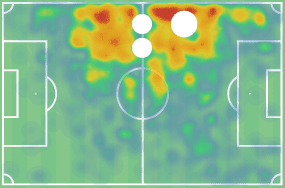
Brandon has played as a centre-midfielder, centre attacking-midfielder and now also as a wide midfielder in his career. He is a versatile player who can occupy all parts of the attacking midfield. The heat map shows his maximum activity area for Goa last season.
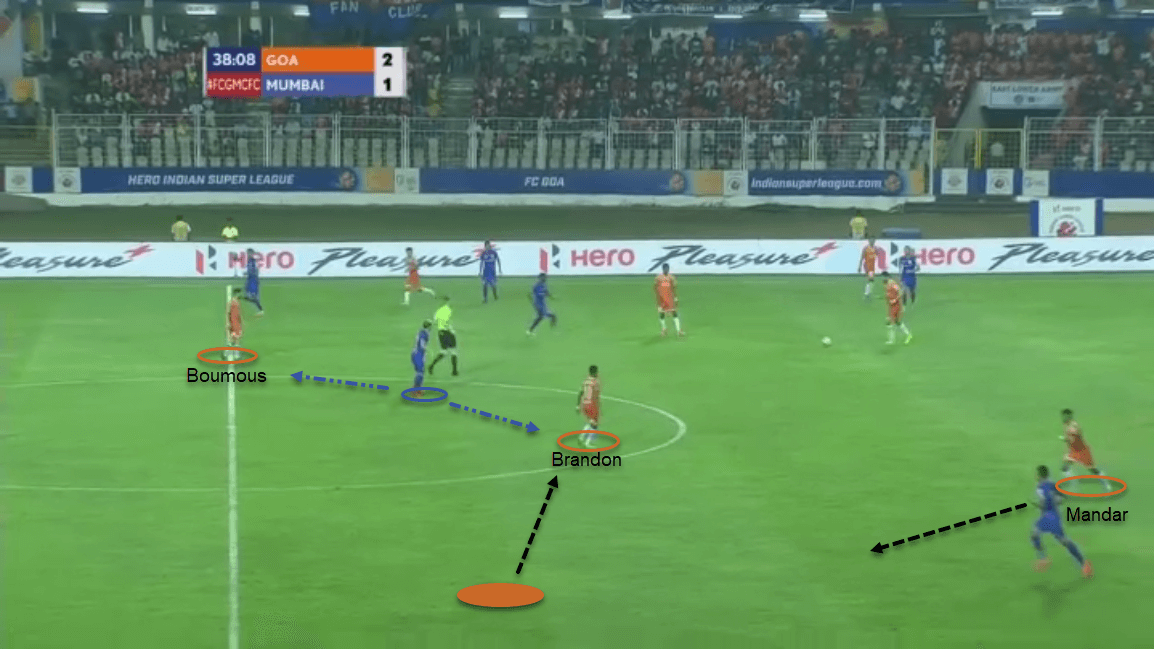
Goa focuses on building their attack from the central corridor, for which Brandon Fernandes played an integral part. Despite starting as a left-midfielder, he had huge responsibilities in getting the ball up the field. He is a player who is always in the hunt for space. Therefore, when his team is in possession, he tends to invert and drift into the half-space or the central channel of the pitch.
This positional change makes it difficult for the opposition full-back to track him in the central region. This also leads to him doubling up with Hugo Boumous on the opposition pivot. He thus creates a 2v1 situation in the mid-block, which in turn results in having a free man in the buildup.
Brandon doesn’t just swiftly move into the space, but also creates it for his teammates. His vacancy allows the pacey left-back, Mandar Rao, to progress further in order to occupy a higher position on the left-wing. This positional switch is key to bringing his influence in the game. He was the recipient of 33.02 passes per 90 (third highest in his team and the league) in the league last year.
-
In Transitions
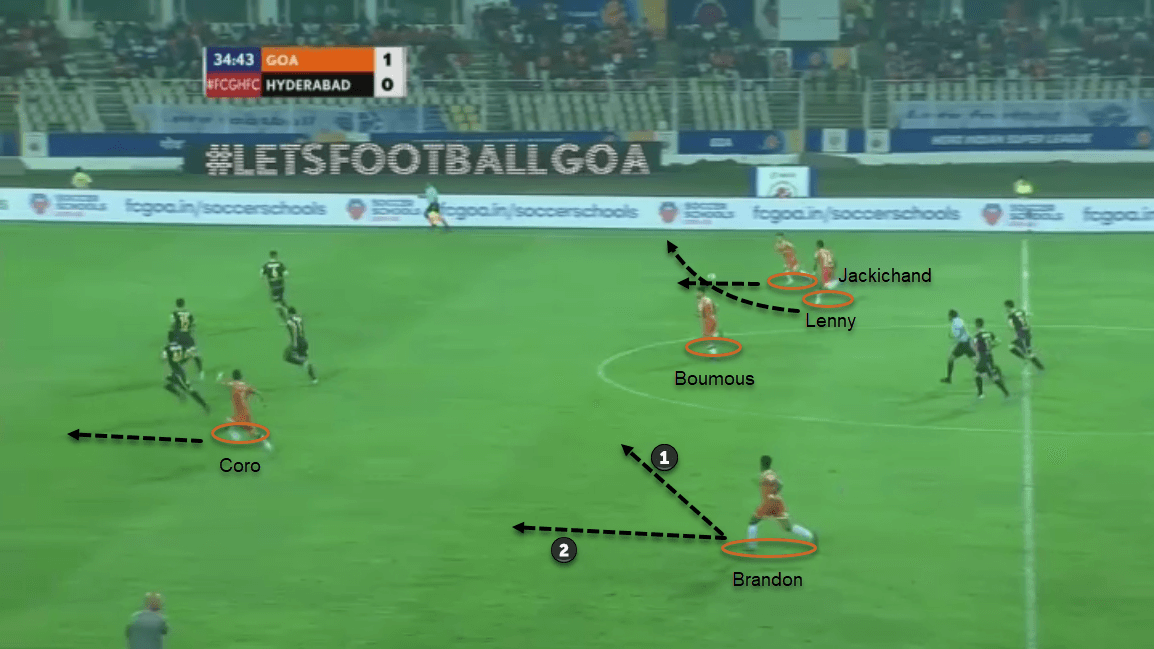
One of the key elements of the counter-attack is to have players off the ball make inventive movements. Brandon is very disciplined with his movements in transitions. In the match against Hyderabad, Goa had a 5v4 situation from a counter-attack. Jackichand was on the ball and Lenny decided to curve his run wider to stretch the Hyderabad back-line and make way for Jackichand to drift inside. Boumous supported as a second attacker, running in line with Jackichand. Coro had pinned the right-back and moved wider from his natural position. Just like Lenny, Coro was running as a wide option while trying to stretch the opposition and creating space in the centre. Brandon has two options since he is the furthest from the ball, either to move inside or maintain the wide vertical run.
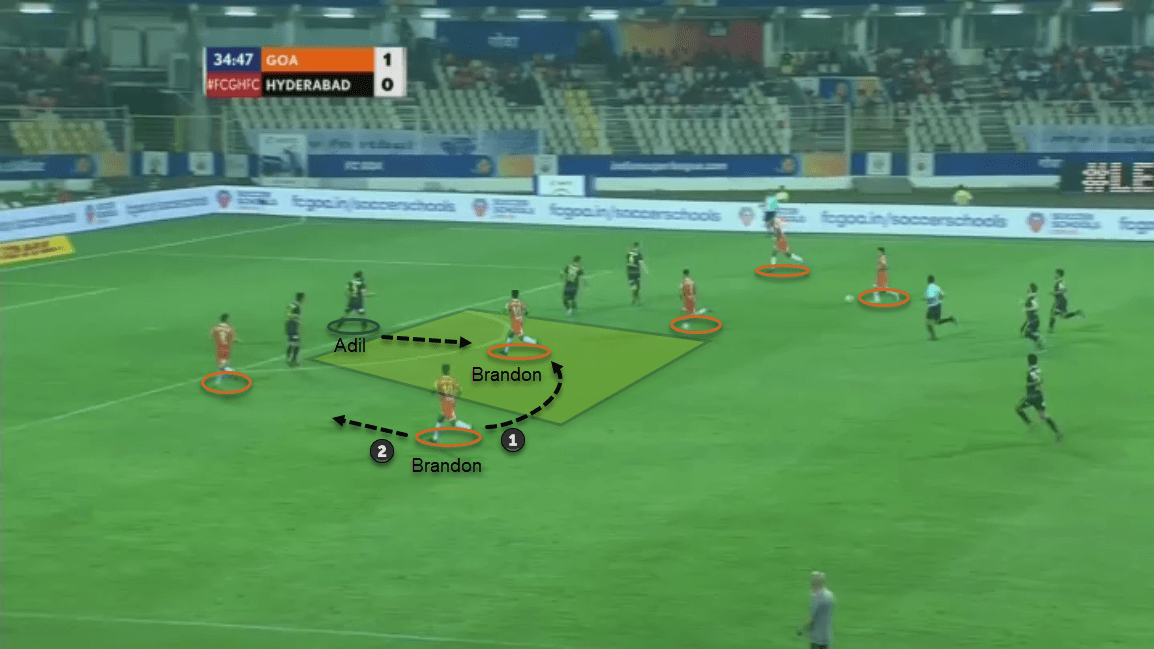
Realising that Lenny and Coro have pinned both the full-back, space opened up in the centre. The movement to drift inside would make a 4v4 against the Hyderabad backline and leave Jackichand with the choice to pick the pass against a defender in a 2v1. This change of running lane would also help in disorienting the defence line. However, Brandon chose to continue his vertical run out wide. This allowed Adil to focus on Boumous’ run and Jackichand was dealt with by the left-centre back of Hyderabad. His vertical run didn’t cause any trouble for the defenders and his contribution seemed futile.
Due to his defensive duties, Brandon makes runs from deep in transitions. These predictable vertical runs can be turned into interchanging runs with a change in movement and direction. It will get him into promising positions to offer a greater threat to the opposition. Brandon can improve this element of his game to add value in transitions for Goa.
Attacking play
-
Dribbling ability
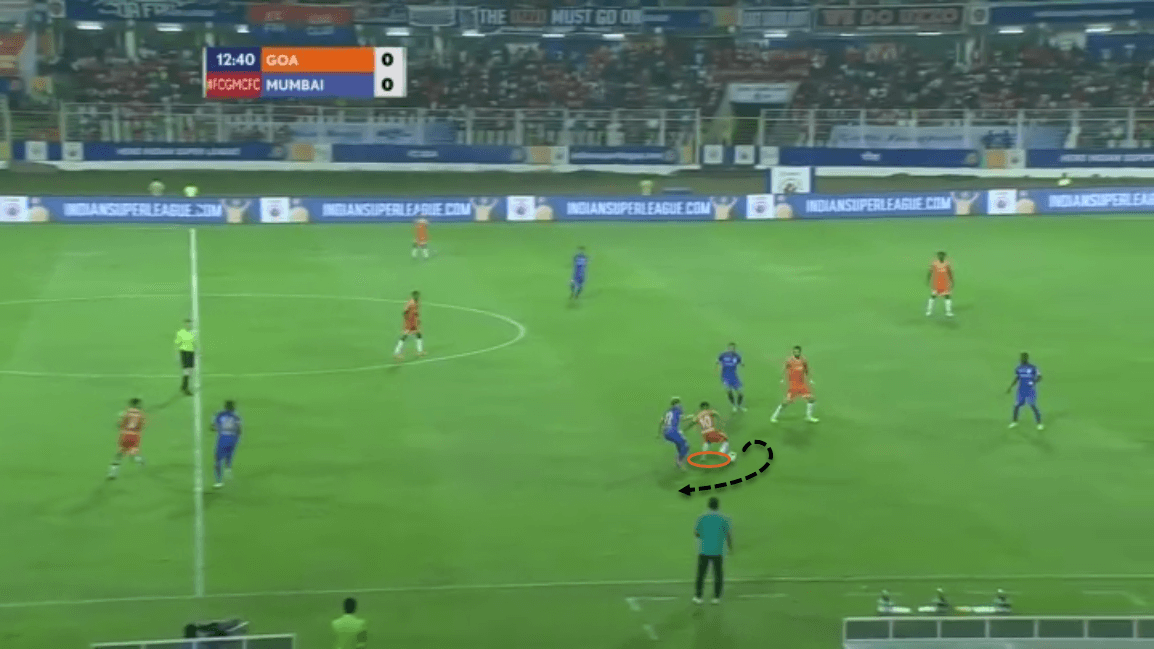
The key involvement in the build-up clearly came with some pressure from the opposition. As his back is facing the goal, he uses his body well to guard the ball. He has a few tricks in his bag to get rid of the player. Brandon uses his body feints and quick turning ability to baffle his marker. He is agile on the ball and his upper body movement does enough to keep possession. Brandon attempted 3.48 dribbles per 90, out of which 1.99 were successful dribbles per 90. A good chunk of this came in his own half because of his urge to help the team in the build-up.
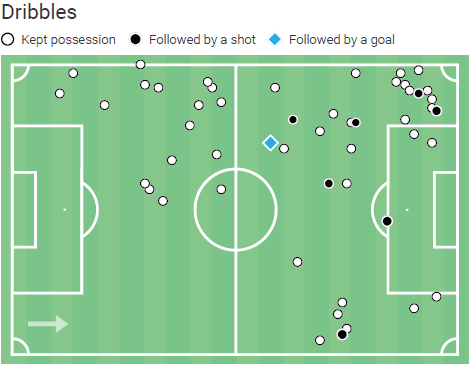
His dribbling intention in the opposition half is to create chances for others rather than himself. He is a midfielder in true nature and therefore tries to find angles to pass through his dribbles. He is proficient in using his forward-backward movement, dropping his shoulder and change of pace to find the crossing angle.
Being a right-footed left-midfielder he does very little to cut inside in order to curl one around the goalkeeper, hence his dribbling movements are rather lateral and perpendicular than diagonal. This explains his only 0.12 dribbles leading to a shot last season. All of his shots from dribbles came from the outside of the penalty box. Evidently, his priorities are to keep the possession instead of trying to do the job himself.
-
Shooting
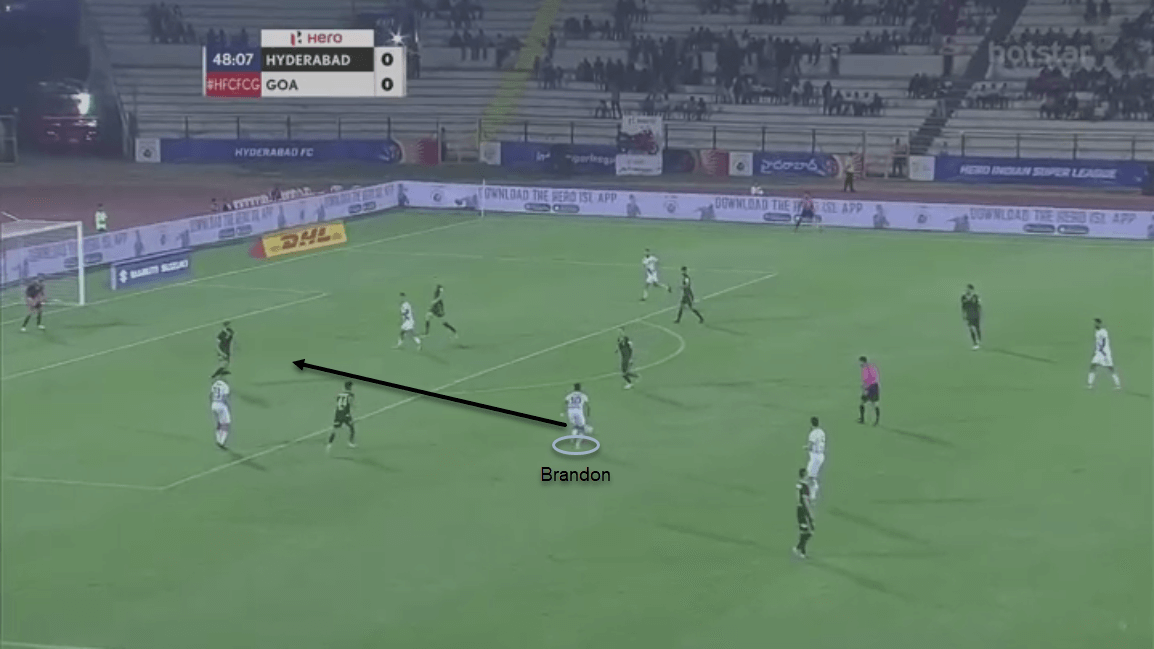
The Goan midfielder is not afraid to shoot from distance and fancies taking shots from his team-mates lay-offs outside the penalty area. Brandon took 31 shots last season, out of which nine were on target. His accuracy was greatly affected by the distance of the shot, however, he puts enough power behind the shots to test the keeper. Both of his goals in the season came from outside of the box and he is especially effective from the left half-space as he knows how to keep the ball low. Unfortunately, it isn’t the same from the right half-space where his shots often rise high.
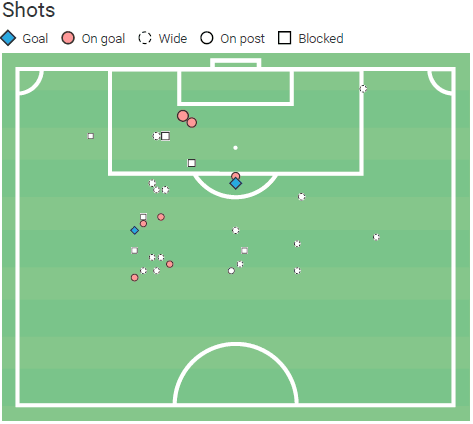
His touches in the box were 1.27 per 90 and progressive runs were 1.1 per 90, limiting his action in the box. He took only five shots from the inside of the penalty area of which one was wide and two were blocked.
Goa’s goal-scoring responsibilities were mostly tasked upon former La Liga forward Coro and Boumous, but Brandon showed that he can have an impact from deep. His technique and power can assure more goal contribution if he manages to get inside the box regularly while improving his accuracy.
Passing caliber
Brandon Fernandes ticks all the boxes of passing the ball. He is the epitome of a midfielder, playing 40.8 passes per 90 with 80.64% accuracy. It’s easy to talk about his outstanding passing numbers without realising how he does it. Players playing in a team with higher possession will naturally have more passes per game. Their passing accuracy will be defined by the position they play, the pressure they face and such other factors. So what sets Brandon apart from the others?
-
Progression
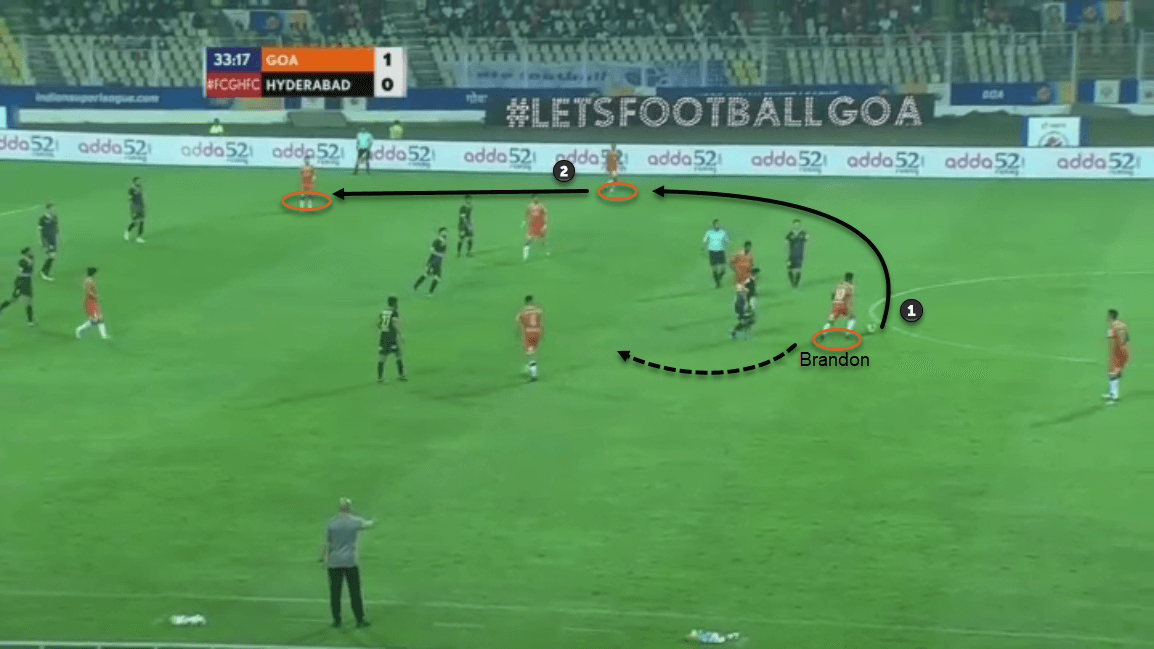
Brandon played a key role in circulating, switching the play wide and progressing it from the centre. He reads the game brilliantly to identify the next move and is ready to support the following player.
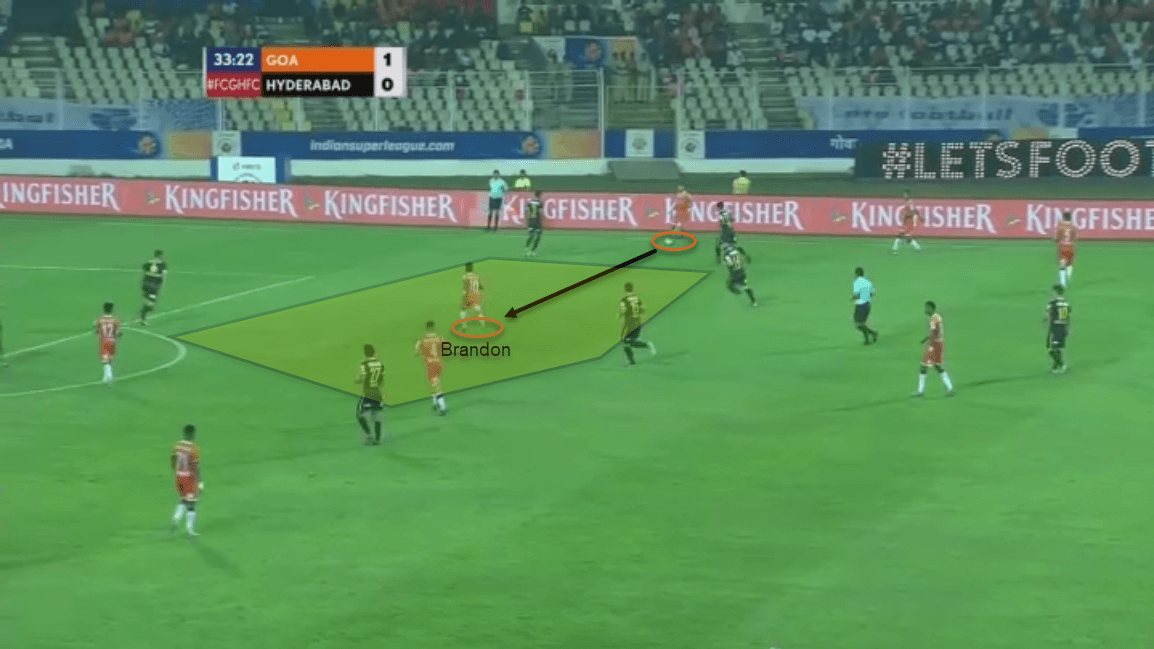
It’s one thing to run close to the player on the ball and another to identify space and provide substantial support without being marked. Brandon was smart to make a blindside run behind the three midfielders into space. He is a player who would always be a supporting option on the pitch no matter who has the ball. He played 8.72 progressive passes (highest amongst all the attackers in the league) with an accuracy of 80.38%.
All of this was possible because of his exquisite first touch which helps him get out of pressure, link-up with near players for quick one-twos, constant scanning of the field to play one-touch passes and urgency to get forward after playing a pass.
-
Deception
It is worthwhile noticing how effective Brandon’s passing is in all areas of the pitch. His quality is sustained because of the intelligent ways he finds those passes. He deceives his opponents in multiple ways to find the angle of the pass without any hindrance.
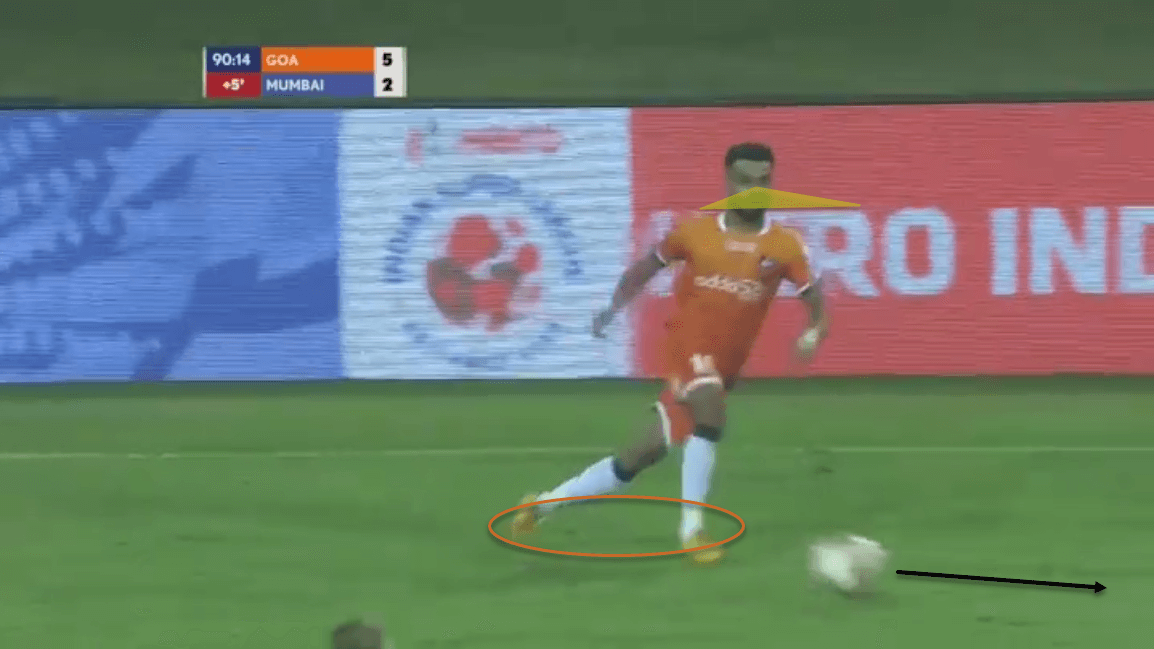
The above picture shows that he is looking at the far-side for a potential lateral pass. His eyes are focused on the horizontal option, however, he has already played a pass to his diagonal option. He uses his head and eyes well to mislead the opposition.
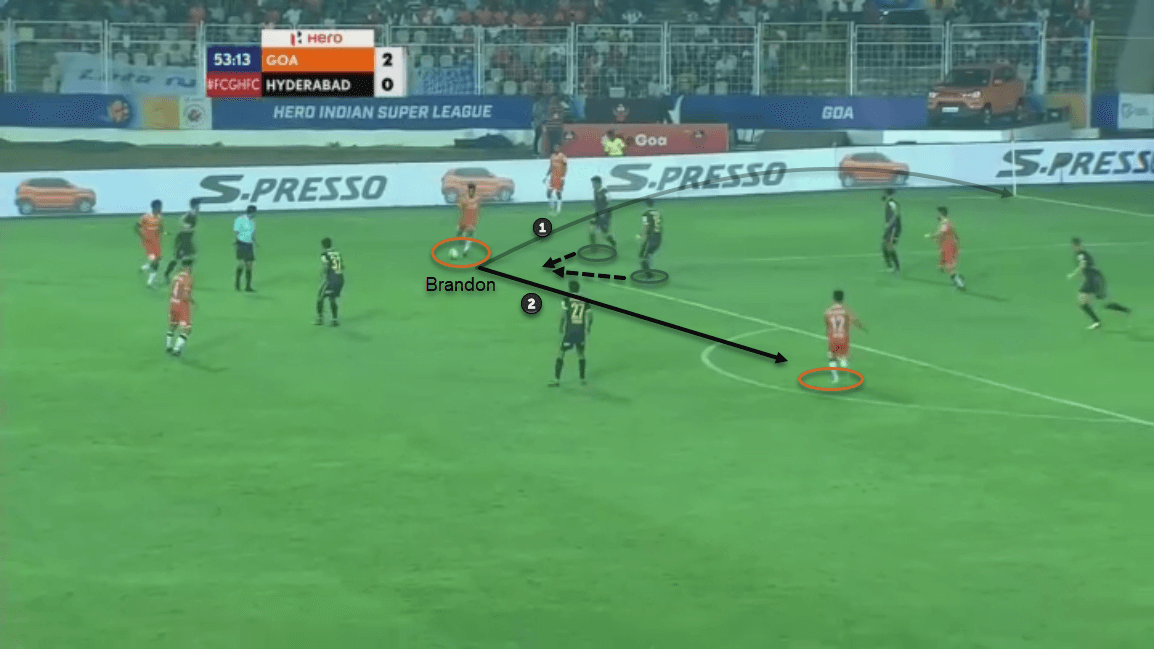
In the match against Hyderabad, he received the ball on the edge of the box. He opened up his body and extended his left arm for balance. As he was getting his head over the ball, this was a clear indication of him going for a shot or a cross at the far post, attracting two players to close him down.
However, his early scanning had made him aware of the option he had. He manipulated both of the Hyderabad defenders to roll the ball nicely for Jackichand Singh. This is how Brandon uses his body, eyes, change of pace and direction to deceive his opposition. He used this trickery to play accurate reverse balls and disguised passes throughout the season.
-
Creating chances
Adding to the qualities mentioned above, he is a visionary player. While he is quick to release the ball, he is quicker to decide the best option for it. Creating chances for his team is another reason why he moves into the half-space and central corridor from the flanks. He played 1.88 through balls per 90 with 41.18% accuracy.
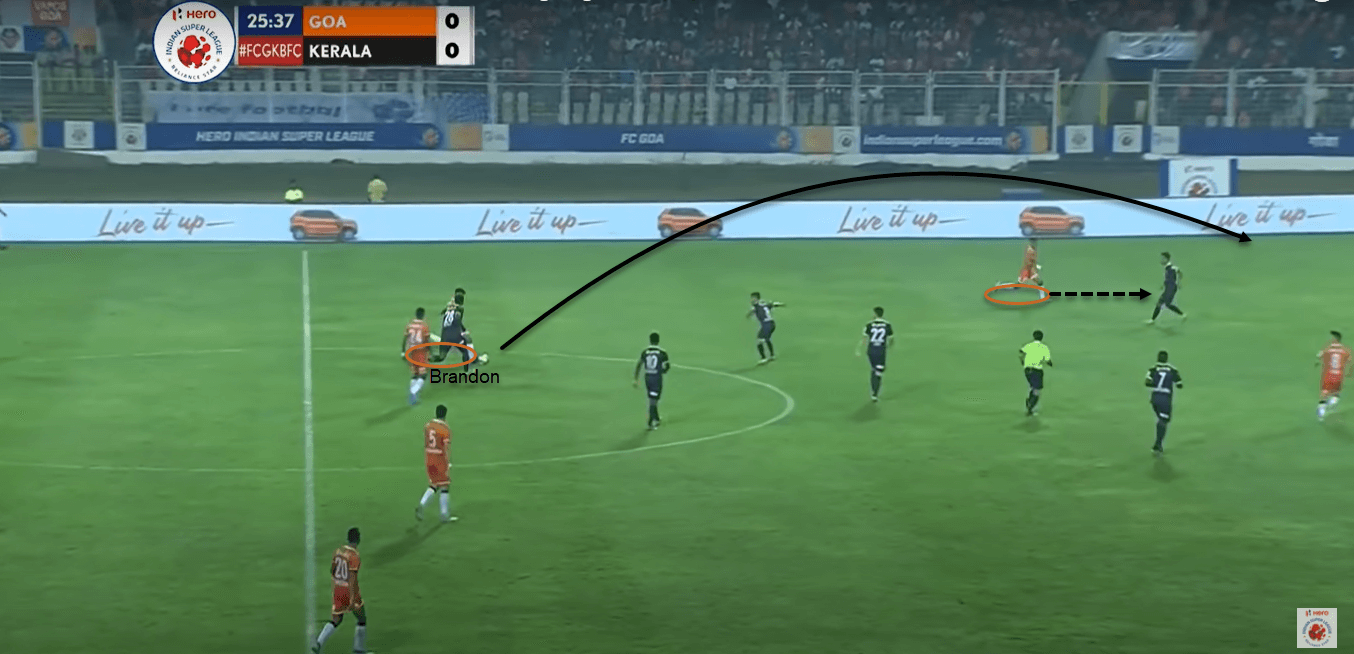
Brandon is equally capable of playing long balls and chip passes as ground passes. The Goan played 5.13 long passes per 90 with 66.67% accuracy (best in both amongst all the attacking players) last year. In the example above, his long ball to Mandar eliminated Kerala’s entire backline.
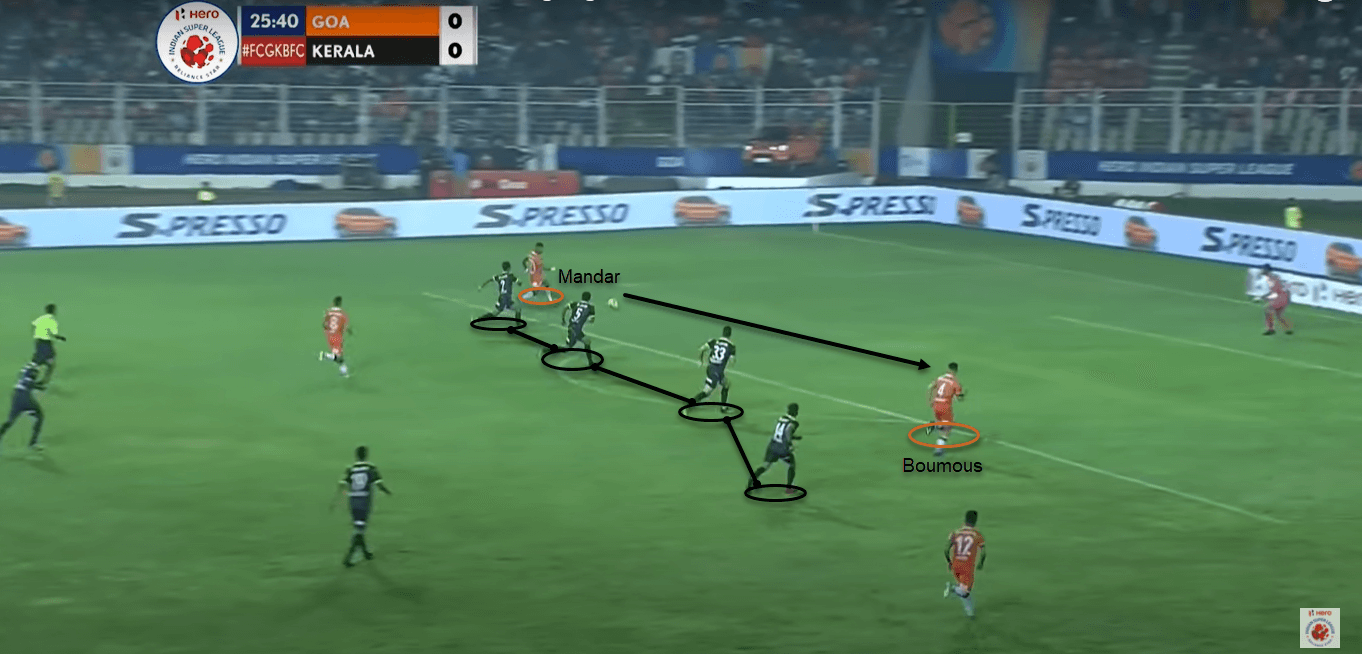
Mandar then squared the ball to Boumous for him to break the deadlock.
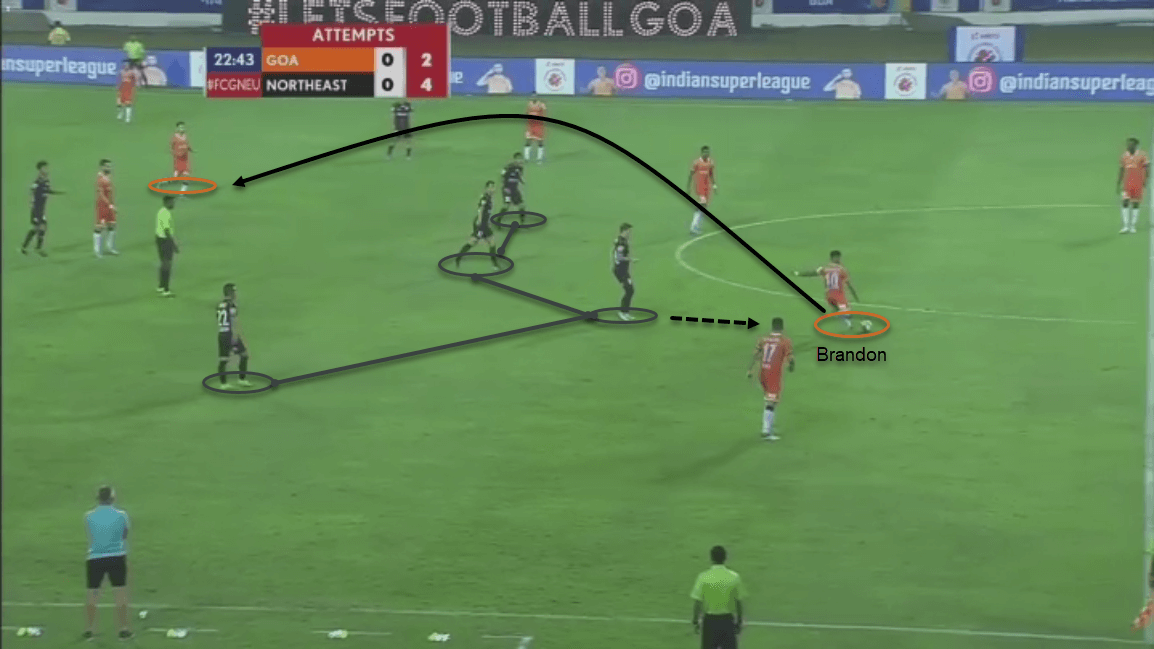
It’s all down to his pre-eminent timing, vision and weight of the pass that he registered four-second assists and two open plays assists out of the total of seven last season.
-
Crossing
Erstwhile Barcelona coach Sergio Lobera’s positional play and lack of aerial dominance from the attacking players didn’t correspond to getting outcomes from crosses for Goa. Also, Mandar took charge of the left-wing in possession. Despite all of that, Brandon did well to deliver 2.76 crosses per 90 with 36% accuracy, proving that he can deliver quality high-crosses with either of his feet.
However, in transitions and fast-attacks Brandon held the width of the team on the left. In such situations, the opposition back-line is caught high and there is enough space to exploit between the goalkeeper and defenders. A low cross is seen as an effective solution to make the most of this situation.

Brandon is not at his finest when it comes to delivering low crosses with his left foot. All his low crosses with his left foot were blocked last season. It’s understood that he won’t find himself ahead of the opposition full-back given his deeper position. Therefore a square pass (2) will always have its difficulty in reaching its target. Perhaps he can either look to bend the cross beyond the full-back (1) or cut-back to deliver the ball with his right (3). This hurdle in his game correlates to his movement in transitions as discussed earlier. Since Brandon prefers his vertical runs, improving his left-foot low crossing will make him indomitable.
Defensive contribution
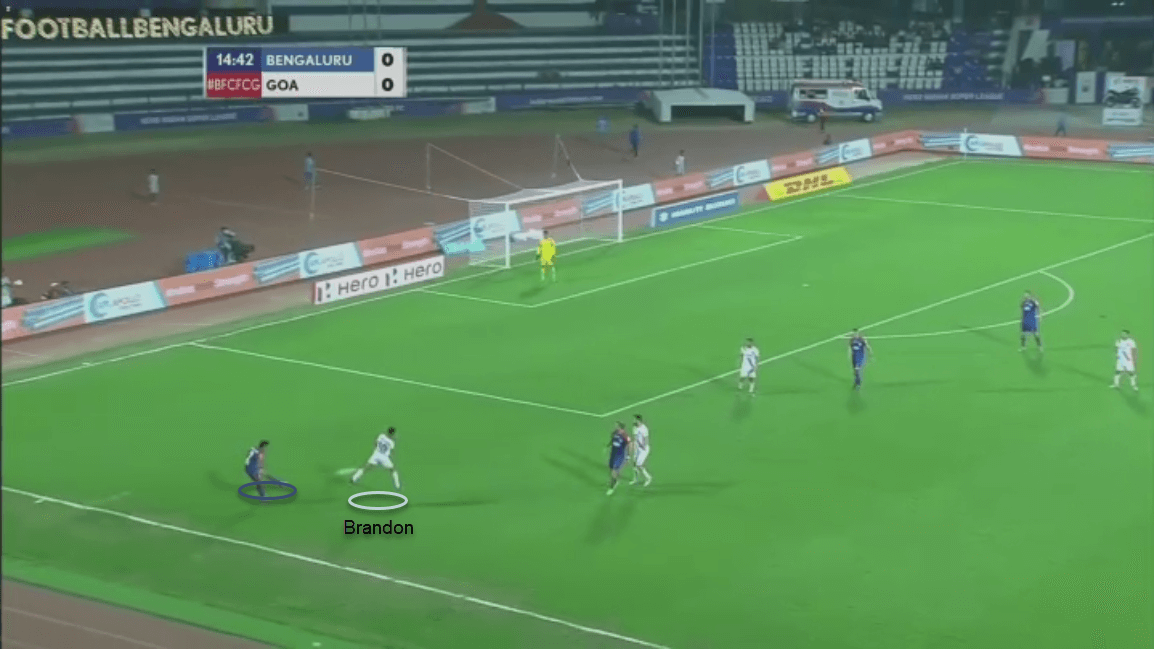
Brandon likes to rush close to the player to force a quick action from him, then tries to anticipate the action of the ball-carrier. He looks to block the passing lane instead of directly tackling the ball. He relies on positioning well in front of the player, his ability to read the player’s action and then stretch his leg out accordingly to block the move.
His PAdj interceptions (3.84 per 90) advocates for his defensive abilities. He is also eager to press from the blind-side of the player. A sneaky short sprint from the back is enough to dispossess the opposition. His goal against Channaiyin was a result of counter-pressing which forced the defender, Goian, into making a poor touch and giving away possession to him.
In case, the player on the ball manages to get past him, he makes it a mission to retrieve the ball. His attitude and desire to win the ball back reflects upon him taking this as a personal defeat. He doesn’t shy away from sliding and often uses it as a last resort while chasing the player. He recorded 0.89 PAdj slide tackles in the last season, however, his hostility to win the possession came at the cost of seven yellow cards.
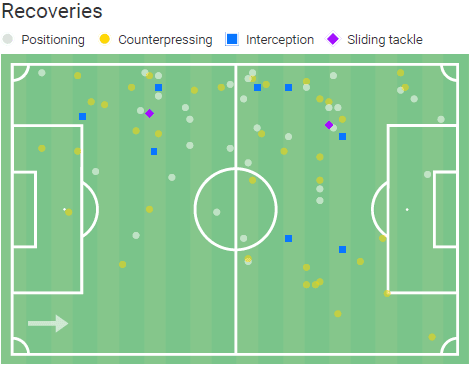
His ability to anticipate player actions makes him valuable in defensive set-pieces. Brandon often stayed as a blocker and bravely rushed off his position upon touch in an indirect free-kick and he managed to block 0.17 shots per 90 (second best amongst all the wide and attacking midfielders) for Goa.
Set-pieces
When a team has players like Mourtada Fall, Lenny Rodrigues, Carlos Peña and Ahmed Jahouh to attack set-pieces, then all it needs is a Brandon Fernandes to deliver them. The Gaurs had the best record from set-pieces in ISL.
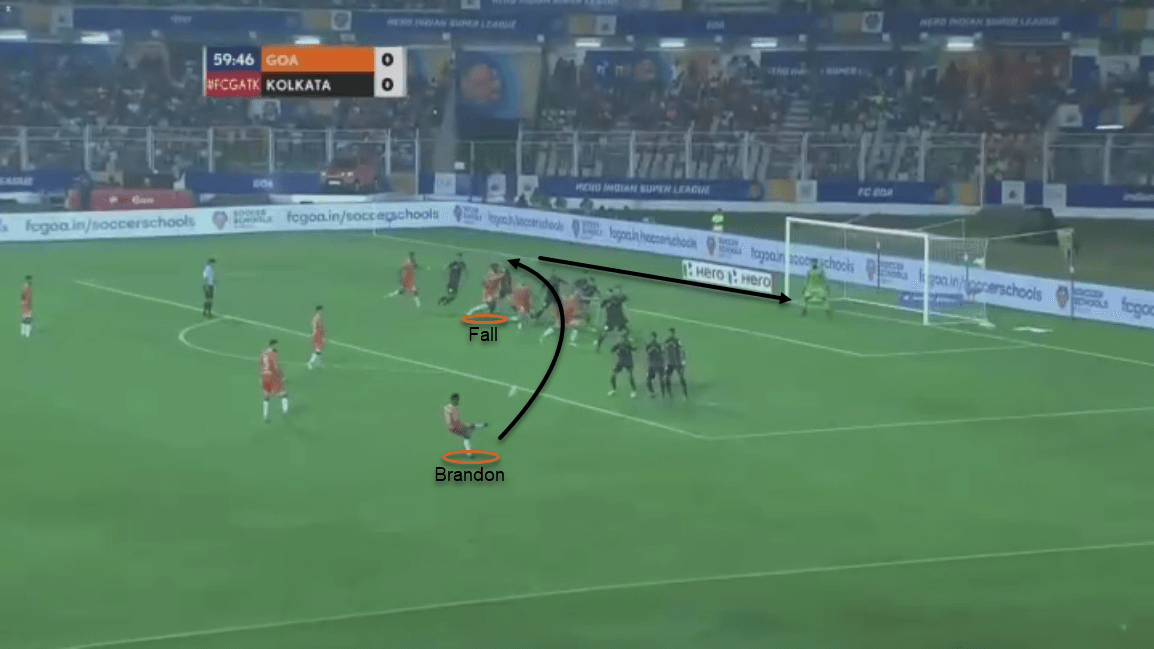
Brandon played a huge part in it by assisting five goals through his deliveries. He took charge of 4.64 corners per 90 and assisted two goals from it. He also took 1.05 free-kicks per 90 and assisted thrice from them.
His set-piece contribution doesn’t limit his club football. In the world-cup qualifiers, India scored only three goals in total. All the three goals came from set-pieces delivered by none other than Brandon Fernandes. His set-pieces supremacy is indisputable.
Summary
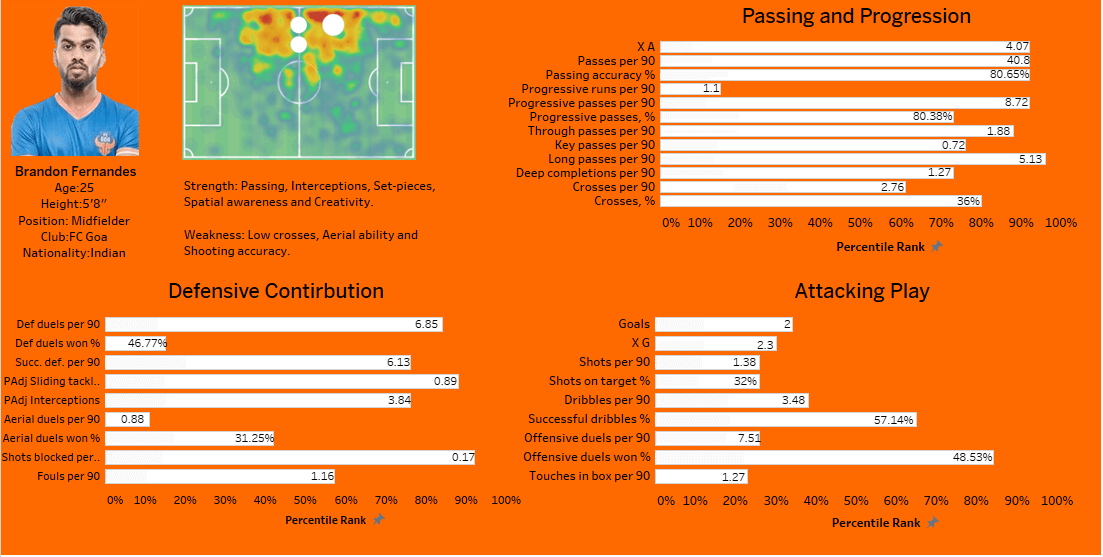
Brandon has shown uniform competency in all areas of the field. He is unique in the sense of playing as a left-midfielder and yet contributing enough from the centre and right flank. A player who thrives on the freedom to give his best for the team, he is a true ruler of space on and off the ball. The Goan midfielder has entered into his prime and had his best season in the last campaign. This is just the rise of an auxiliary midfielder.

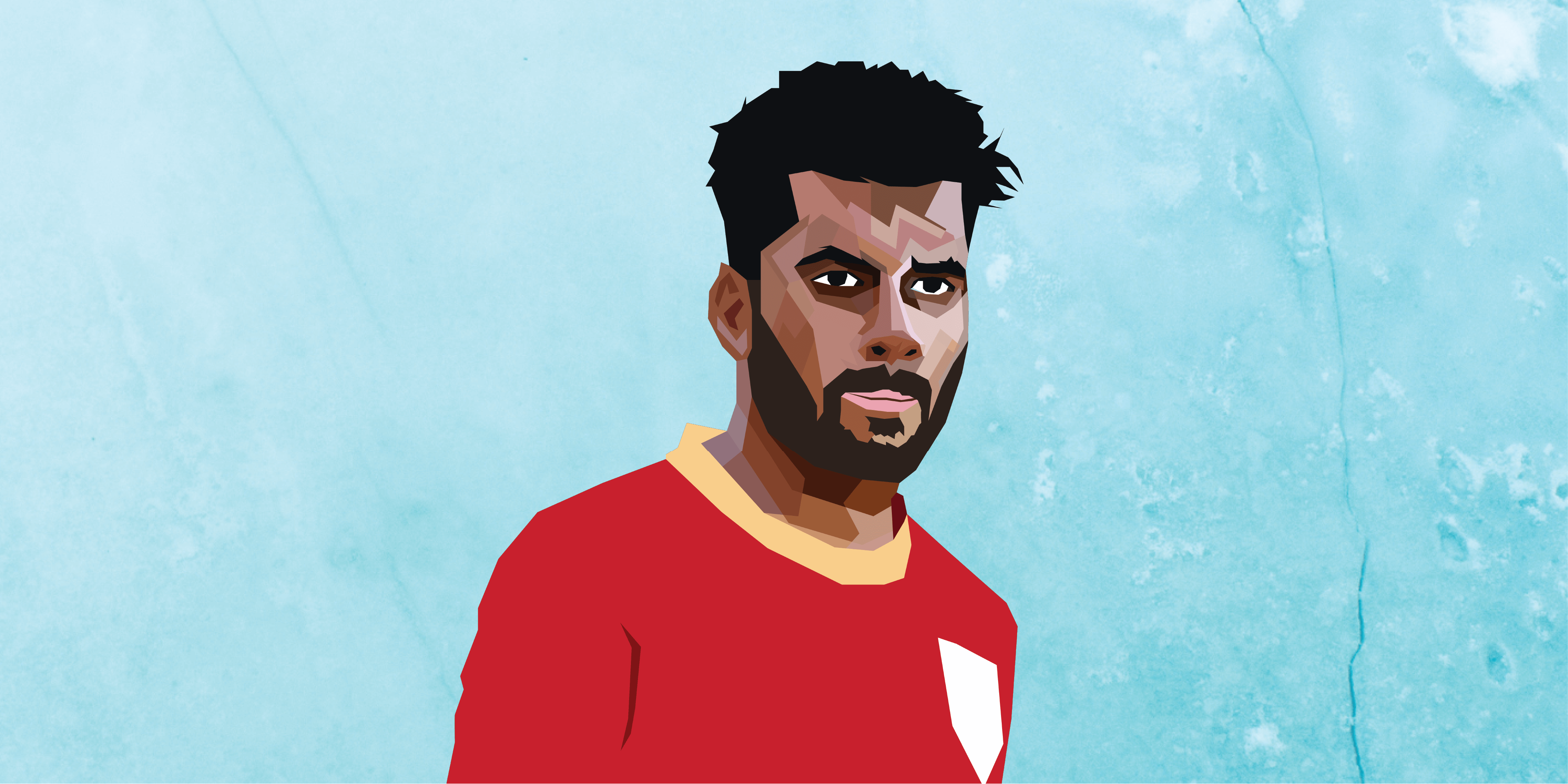



Comments